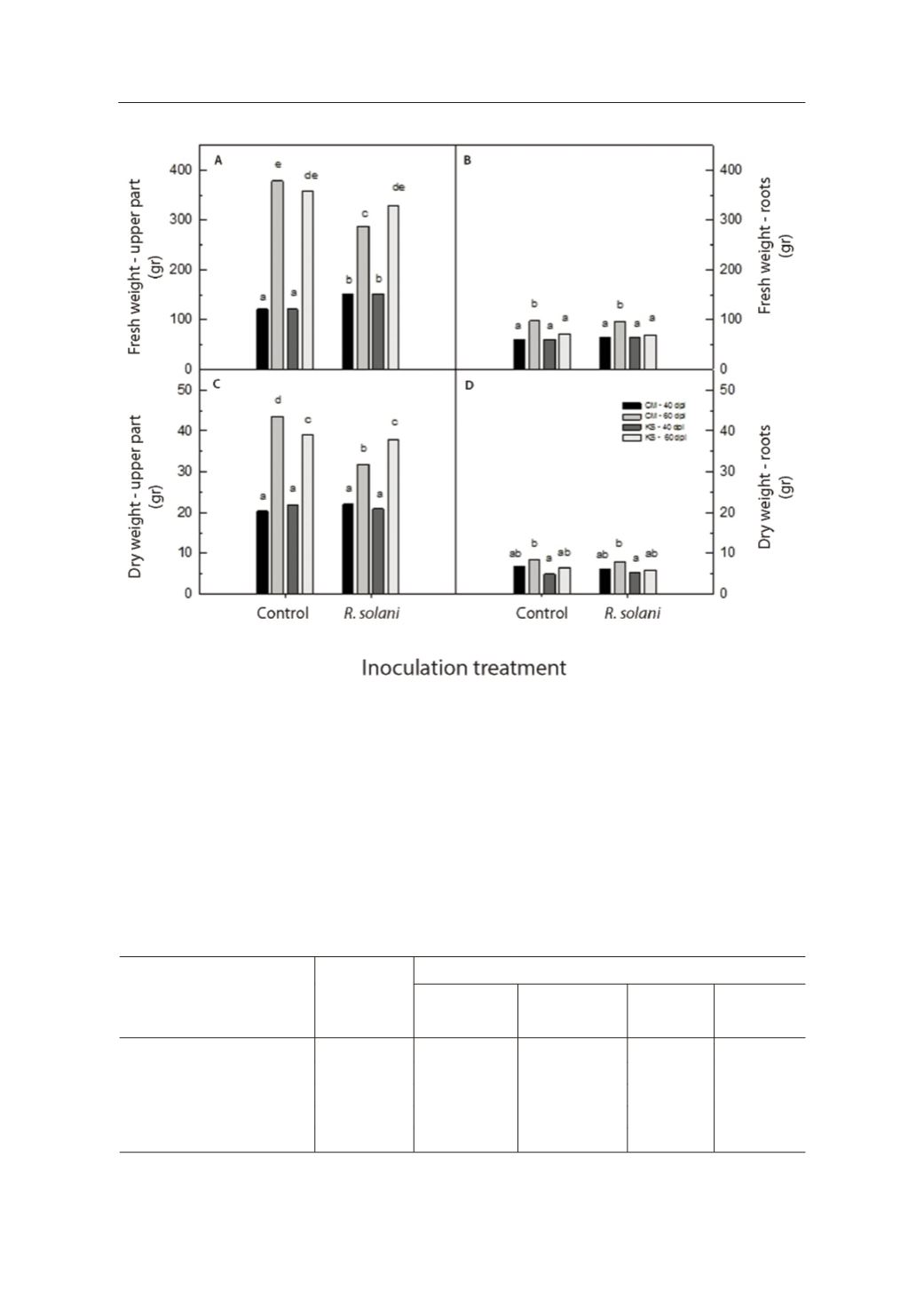
© Benaki Phytopathological Institute
Fusarium
and
Rhizoctonia
infecting native Greek tomato varieties
77
Table 4.
Effect of
Rhizoctonia solani
on the number of flowers, CO
2
assimilation (
A
s
), stomatal
conductance (
g
s
) and transpiration (
E
) of tomato plants of vars ‘Chondrokatsari Messinias’
and ‘Katsari Santorinis’. Data are means of six replicates and were recorded 16 and 27 dpi.
Means followed by different letters are statistically different according to the Duncan’s Mul-
tiple Range test (
P
= 0.05).
Variety
Treatment
Variables
Number of
flowers
A
s
(μmol CO
2
/m
2
/s)
g
s
(mmol/m
2
/s)
E
(mmol/m
2
/s)
‘Chondrokatsari Messinias’
Control
2.40 b
9.08 b
0.19 bc
2.77 b
R. solani
1.55 a
7.80 a
0.15 a
2.30 a
‘Katsari Santorinis’
Control
7.95 c
11.01 c
0.23 c
3.01 c
R. solani
8.80 d
8.35 ab
0.18 ab
2.50 ab
Figure 4.
Fresh weight (FW) and dry weight (DW) of the aerial parts (A, C) and the root system (B, D) of ‘Chondrokatsari
Messinias’ (A, B) and ‘Katsari Santorinis’ (C, D) tomato plants inoculated with
Rhizoctonia solani
. Data are means of six rep-
licates. FW and DW were measured 40 and 60 dpi. Columns followed by different letters are statistically different according
to the Duncan’s Multiple Range test (
P
= 0.05).


